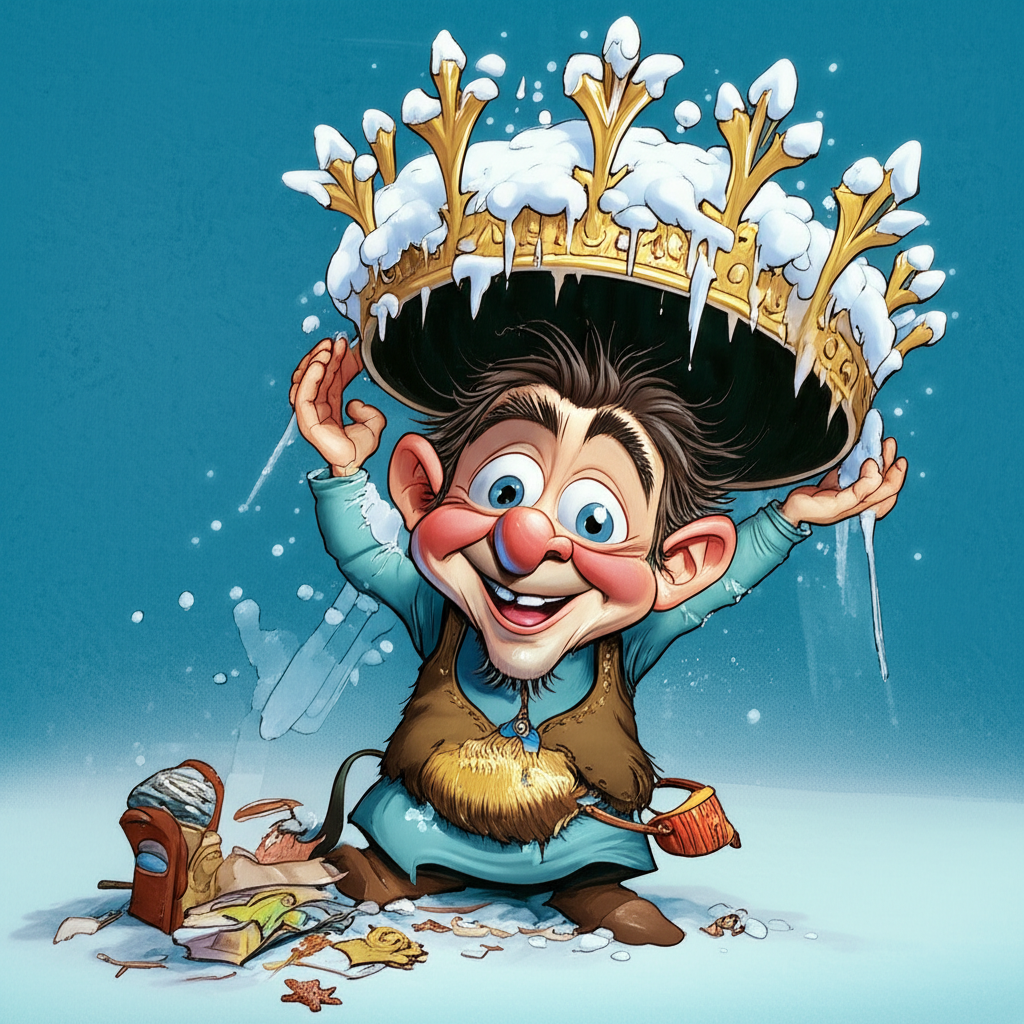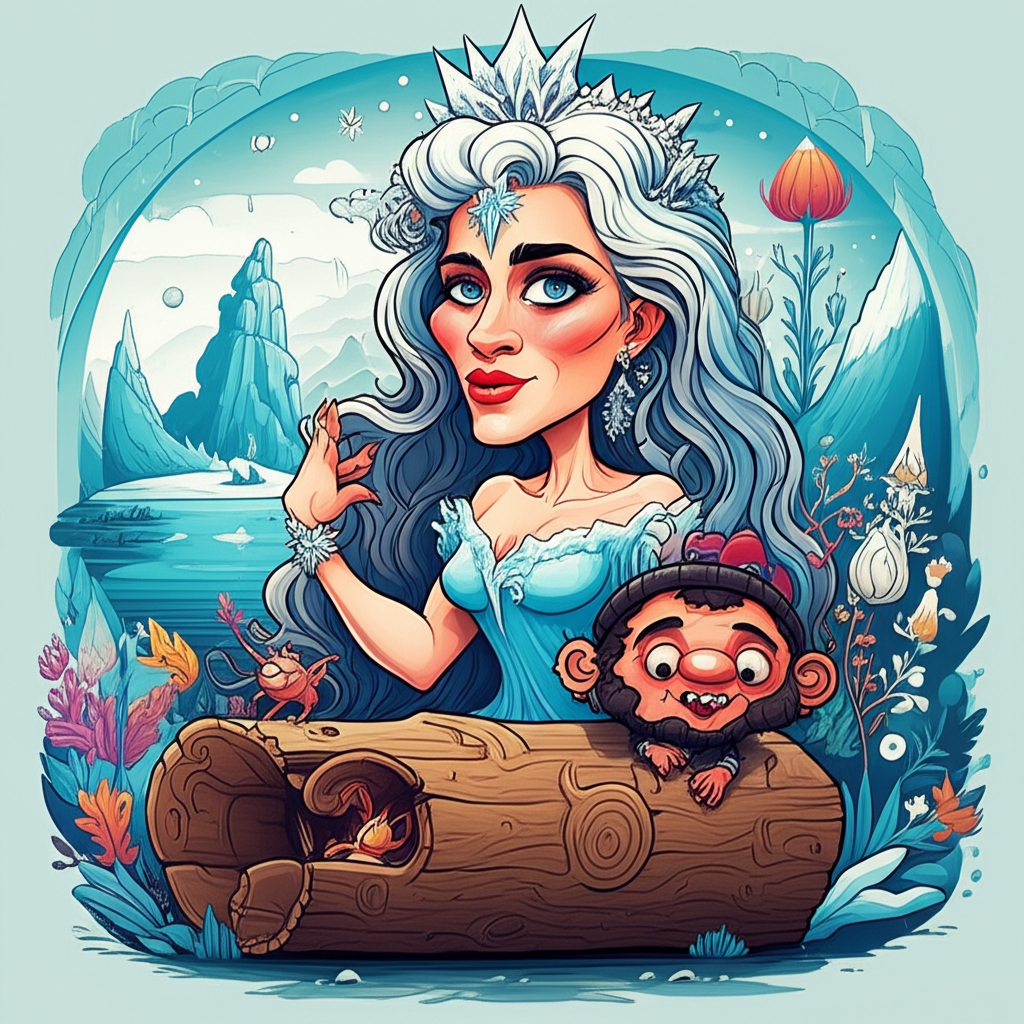
1. Introduction
The story of Domovoi and the Crown of Winter is a captivating narrative born from the rich tapestry of Slavic folklore, specifically echoing through the villages and hearths of ancient Eastern Europe. This tale, like many others from its cultural lineage, is a traditional story, a product of the imaginative minds of ancient peoples who sought to understand and explain the world around them. It is presented here purely for cultural, historical, and educational understanding, offering a glimpse into the creative storytelling traditions that shaped early Slavic societies. It is important to reiterate that this is a myth, not a factual account, nor is it meant to promote belief or practice in any mythological entities.
2. Origins and Cultural Background
To truly appreciate the myth of Domovoi and the Crown of Winter, one must first understand the world in which it was conceived. This myth originated in pre-Christian Slavic societies, an era defined by agrarian life, tight-knit communities, and an intimate, often challenging, relationship with the natural world. Life revolved around the rhythms of the seasons, particularly the harsh, unforgiving winters that could spell life or death for a family. Homes, often simple wooden structures, were sanctuaries against the cold, and the hearth was not merely a source of warmth but the very heart of survival and family unity.
People of this time viewed the world as imbued with unseen forces and spirits. Every forest, river, field, and especially every home, was believed to have its own guardian or mischievous entity. This worldview was not one of strict scientific understanding, but rather a deeply spiritual and animistic interpretation of existence, where the natural and supernatural intertwined. They sought to appease these spirits, to live in harmony with them, and to understand their influence on daily life, ensuring good fortune and protection from harm.
3. Character / Creature Description
At the heart of this tale stands the Domovoi, a quintessential figure in Slavic folklore. The Domovoi is described not as a god or a grand deity, but as a household spirit, a benevolent (though sometimes mischievous) guardian of the home. He is typically imagined as a small, old man, often covered in fur or resembling the master of the house, perhaps with a long, grey beard and sparkling eyes. His presence, though rarely seen, was felt in the creaks of the floorboards, the rustling in the attic, or the gentle hum near the hearth.
Symbolically, the Domovoi represented the spirit of the home itself – its warmth, stability, and the well-being of the family dwelling within. He was believed to protect the livestock, ensure the bread rose, and keep the family safe from misfortune, provided they showed him due respect, often in the form of small offerings of milk, bread, or tobacco left by the stove. He was a protector, a silent patriarch of the unseen realm of the household, embodying the sanctity of domestic life and the continuity of generations.
Central to our narrative is also the Crown of Winter, a mythical artifact not always explicitly part of traditional Domovoi lore, but imagined here to embody the potent forces of the season. This Crown is depicted as a breathtaking circlet fashioned from pure, ancient silver, interwoven with shimmering ice crystals that never melt and fragments of fallen starlight. Its symbolic attributes are profound: it is said to hold the very essence of winter – the power to bring forth the first delicate snowfall, to command the biting winds, and to usher in the deep slumber of the land, essential for its renewal in spring. It represents the raw, untamed power of the coldest season, a force that must be balanced and respected, lest it plunge the world into an eternal freeze or an unnatural warmth that would disrupt the cycle of life.
4. Main Story / Narrative Retelling
In a secluded valley, nestled amongst snow-laden pines, lay the village of Oakhaven. For generations, the families of Oakhaven had honored their Domovoi, leaving small offerings by the stove and speaking respectfully of the unseen guardian of their hearths. Among them lived the Volkov family – a kind, hardworking couple, Elara and Bogdan, and their young daughter, Anya. As autumn’s chill deepened, preparing for the long, arduous winter was paramount.
This particular year, however, something was amiss. The usual crisp bite in the air was absent, the first dusting of snow delayed. An unnatural warmth persisted, threatening to disrupt the land’s vital slumber. Whispers spread through Oakhaven of the Crown of Winter, an ancient artifact rumored to be the source of the season’s balance. Legend held that it was entrusted to a guardian, deep within the oldest, most hidden parts of the land, ensuring that winter arrived justly and departed gracefully. But it seemed its power was wavering, or perhaps, misplaced.
One night, as Anya slept, Elara and Bogdan heard a frantic scuttling from behind their stove. Their Domovoi, usually a calm, reassuring presence, emerged, his tiny, wizened face etched with alarm. He was smaller than usual, his fur bristling, and he spoke in a voice like dry leaves, a sound only they, the true residents of his home, could understand.
"The Crown," he rasped, "It has been disturbed. A foolish spirit, a young Leshy from the nearby woods, sought to play a trick, to prolong autumn’s bounty for his deer. He has taken the Crown, not understanding its true purpose, and now its power is untethered. Winter itself is confused."
The Domovoi, whose realm rarely extended beyond the walls of his cherished home, felt the imbalance acutely. The hearth, his very essence, was weakening with the encroaching unnatural warmth. He knew he had to act. Gathering his courage, he bade the Volkovs farewell, promising to restore the balance.
Venturing into the biting, yet unseasonal, night, the tiny Domovoi faced a world far larger and wilder than his familiar abode. He followed the faint trail of displaced cold, a shimmer of frost on barren branches. He encountered mischievous sprites and bewildered animals, all suffering from the season’s disarray. Finally, deep in the ancient forest, he found the young Leshy, adorned foolishly with the Crown of Winter, trying to command the trees to bloom again. The Crown, however, pulsed erratically, its power uncontrolled, causing bizarre weather patterns – patches of frost next to blooming flowers.
The Domovoi, though small, possessed the wisdom of centuries spent guarding homes. He did not confront the Leshy with force, but with understanding. He explained the delicate balance, the necessity of winter’s harsh embrace for the land’s rest and the spring’s vibrant return. He spoke of the homes that relied on the true winter, the animals that needed the snow. The Leshy, though mischievous, was not malicious. He listened, his playful demeanor replaced by a dawning comprehension of the chaos he had wrought.
With a heavy sigh, the Leshy gently removed the Crown, its icy gleam now more subdued. The Domovoi, with nimble fingers, carefully took the artifact, feeling the familiar hum of balanced power return. As he journeyed back towards Oakhaven, a cold wind began to blow, carrying the first delicate snowflakes. By the time he slipped back behind the Volkov’s stove, a gentle blanket of white had settled over the village, and the hearth fire burned brighter than ever. Winter had returned, not with fury, but with its proper, balancing embrace, all thanks to the humble guardian of the home.
5. Symbolism and Meaning
The myth of Domovoi and the Crown of Winter, like many traditional tales, is rich with layers of symbolism and meaning that would have resonated deeply with ancient Slavic peoples. The Domovoi himself symbolizes the sanctity and enduring spirit of the home, emphasizing the importance of domestic harmony, family unity, and the unseen forces that contribute to a household’s well-being. He represents the idea that even the smallest, most unassuming presences can hold significant power and responsibility. His journey out of the home underscores the profound connection between the individual household and the wider natural world.
The Crown of Winter, a focal point of this narrative, symbolizes the raw power and cyclical nature of the seasons. It embodies the delicate balance of nature, the absolute necessity of winter’s regenerative rest for the land to flourish in spring. The disruption of the Crown’s power represents the dangers of imbalance, the consequences of attempting to control or misunderstand natural forces. The young Leshy’s misguided actions serve as a cautionary tale against hubris and the potential for unintended harm when one meddles with fundamental natural laws. Ultimately, the story’s resolution reinforces the idea that true wisdom lies not in dominion over nature, but in understanding and respecting its intricate patterns and cycles, and that even a small, dedicated guardian can restore cosmic order.
6. Modern Perspective
In contemporary times, the myth of Domovoi and stories like "Domovoi and the Crown of Winter" continue to captivate and educate. Cultural studies and folklore scholars analyze these narratives for insights into ancient Slavic societies, their psychological underpinnings, moral codes, and their relationship with the environment. These myths offer invaluable windows into pre-Christian belief systems and the imaginative ways humans have historically sought to explain the inexplicable.
Beyond academia, such myths have found new life in modern literature, cinema, and digital media. Domovoi-like figures, or adaptations of Slavic household spirits, appear in fantasy novels, children’s books, and video games (such as The Witcher series, which extensively draws from Slavic mythology), often reimagined for contemporary audiences. These modern interpretations allow for the preservation of cultural heritage, sparking imagination and connecting new generations to the rich storytelling traditions of the past, even if the specific narrative of "Domovoi and the Crown of Winter" is an imaginative construct. They highlight the universal themes of home, protection, and the balance of nature that resonate across cultures and time.
7. Conclusion
The tale of Domovoi and the Crown of Winter stands as a testament to the enduring power of human imagination and the rich cultural heritage of Slavic peoples. It is a narrative woven from the threads of ancient beliefs, fears, and hopes, designed to explain the world and impart wisdom. As a cultural story, it offers valuable insights into a historical worldview, demonstrating how communities once sought meaning and order in their surroundings.
It is crucial to re-emphasize that this myth, along with all mythological narratives, is a product of human storytelling and is not to be understood as truth or divine power. As Muslims, we recognize that only Allah (God) is the true Creator and Sustainer of all things, the One who controls the seasons, the universe, and all phenomena, and to Whom all power belongs. We do not attribute partnership or power to any created being, whether real or imagined.
This story, therefore, serves not as an object of belief, but as a fascinating piece of cultural heritage. It reminds us of the universal human impulse to create narratives, to find meaning in the world, and to pass down wisdom through generations. In its descriptive and imaginative recounting, we can appreciate the artistry of ancient storytellers and reflect on the timeless themes that continue to shape our understanding of ourselves and the world around us.





